Every Lunar New Year, Mama Lin will steam fat goh (發糕, also known as fa gao), lightly sweet cakes that open up and blossom once they’re steamed. As a matter of fact, many Chinese families steam fat goh to celebrate the new year because of its auspicious symbolism. In Chinese culture, you eat dishes that carry auspicious meanings during new year celebrations. That means eating foods with names that sound similar to lucky new year’s greetings.
In terms of fat goh, the word fat (發) can mean “prosperity,” “wealth,” or “growth.” The word goh (糕) also sounds like the pronunciation of the character “高,” which means “high” or “tall.” When you put 發糕 together, it can carry the meaning of prosperity and wealth getting higher in the new year. Sometimes, you’ll see fat goh translated as “prosperity cake” or “wealth cake” in English.
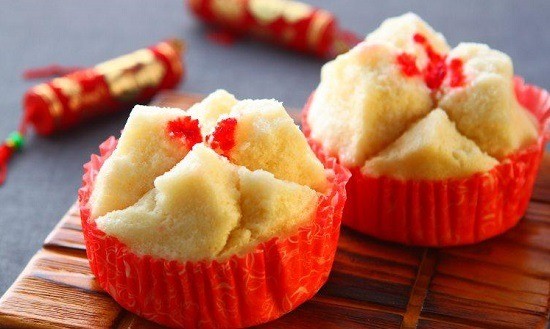
FLOUR BLEND FOR FAT GOH/FA GAO
To make the batter, my mom uses 3 types of flours: cake mix, all-purpose flour, and glutinous rice flour.
Traditionally, fat goh are made with glutinous rice or glutinous rice flour. Over the years, many Chinese families started using store-bought cake or pancake mixes for the batter. That’s because the leavening agents in these mixes do a very good job of helping the cakes rise high and crack open once steamed.
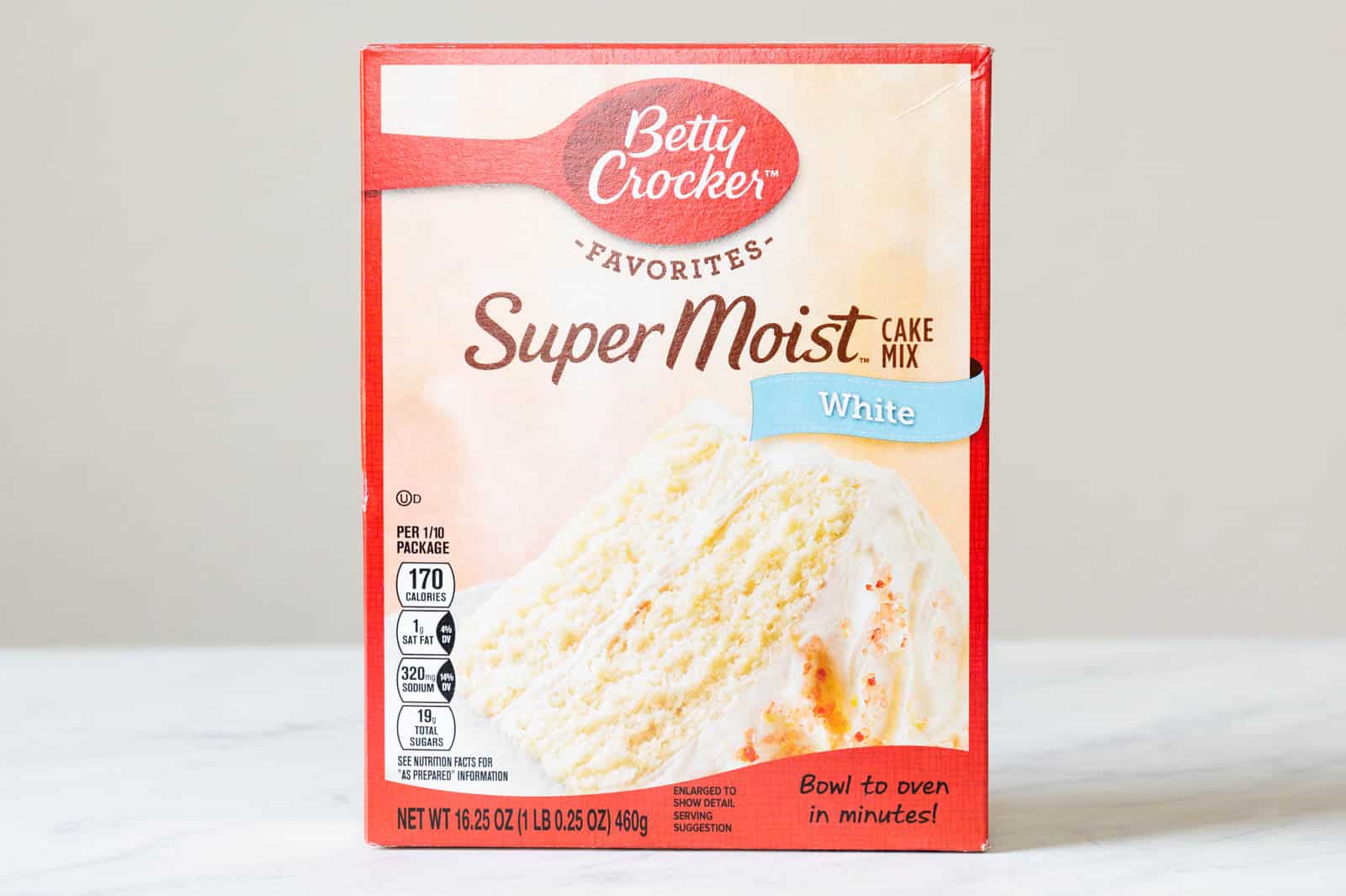
While some families use Bisquick, my mom has always used Betty Crocker cake mixes to make her fat goh. I suspect my mom learned about the cake mix from her friends years ago and has recognized the brand with the red spoon ever since.
For the recipe, I recommend using the Betty Crocker Super Moist white cake mix because it has the least amount of artificial flavor and coloring. You can also use white cake mixes from other brands like Pillsbury. (Recipe testing note: I made a batch of fat goh using Pillsbury’s Moist Supreme yellow cake mix, and the fat goh looked good. However, I was put off by the artificial flavor of the cake, which seemed to mimic vanilla.)
My mom also uses all-purpose flour in her fat goh. Her reasoning is that all-purpose flour tends to be less expensive than boxed cake mixes. In order to conserve the more expensive cake mix, my mom started adding all-purpose flour to her flour blend.
Personally, I prefer adding cake flour instead of all-purpose flour. By cake flour, I’m not referring to formulated cake mixes. Instead, I mean the plain, unflavored lower-protein flour that one uses to make cakes. The lower protein content in cake flour means less gluten development when you make the batter. As a result, the cake has a softer, less chewy texture. You can find cake flour in grocery stores or refer to this tutorial on how to make a cake flour substitute at home.
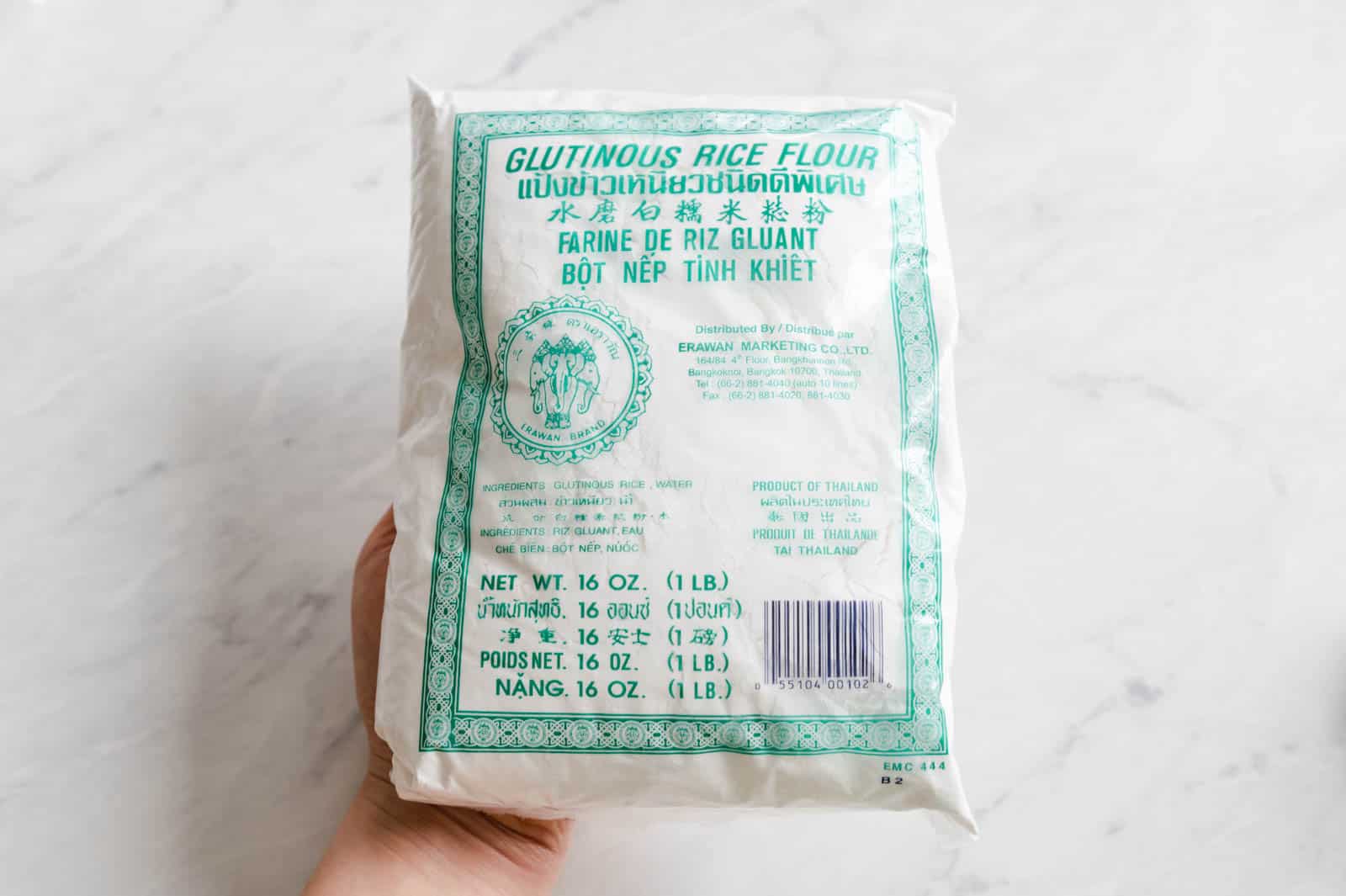
My mom also uses a small amount of glutinous rice flour in her flour blend to give the cakes a light sticky texture. Typically, she uses the glutinous rice flour made by Erawan (they come in bags with green labels). You can find them in Asian grocers or on Amazon (affiliate link). It is important to note that glutinous rice flour is not the same as white rice flour. The former has a stickier quality once it’s heated up with liquid. If you do not have glutinous rice flour, feel free to use sweet rice flour, like the one by Bob’s Red Mill or Mochiko.
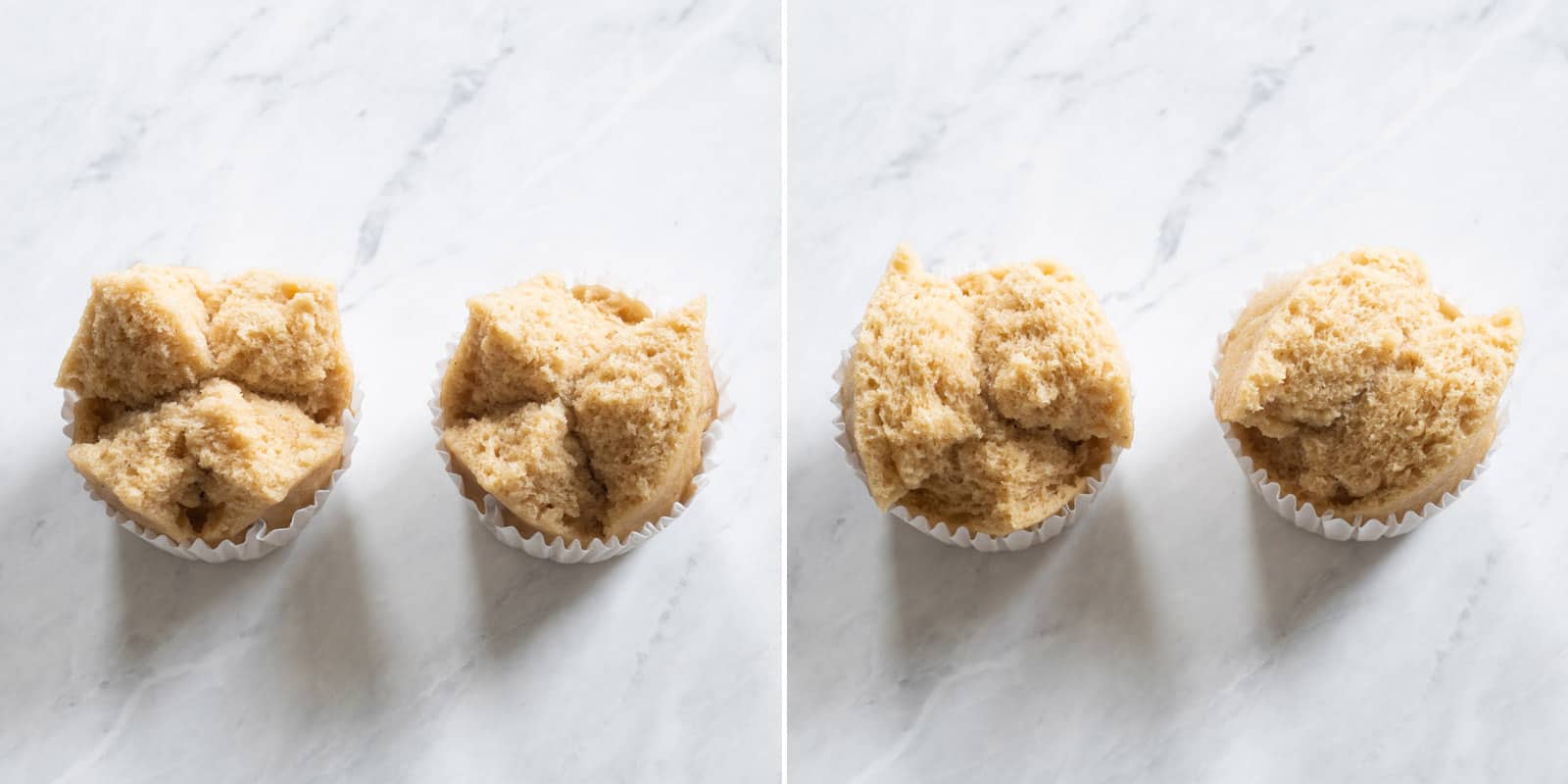
Mama Lin’s original recipe uses water for the batter. When testing this fat goh recipe, I found that the cakes made with milk had better flavor. The big downside is that the cakes don’t crack and blossom as nicely when they’re made with milk (see photos above). I have no idea why this happens, but if you do, please let me know!
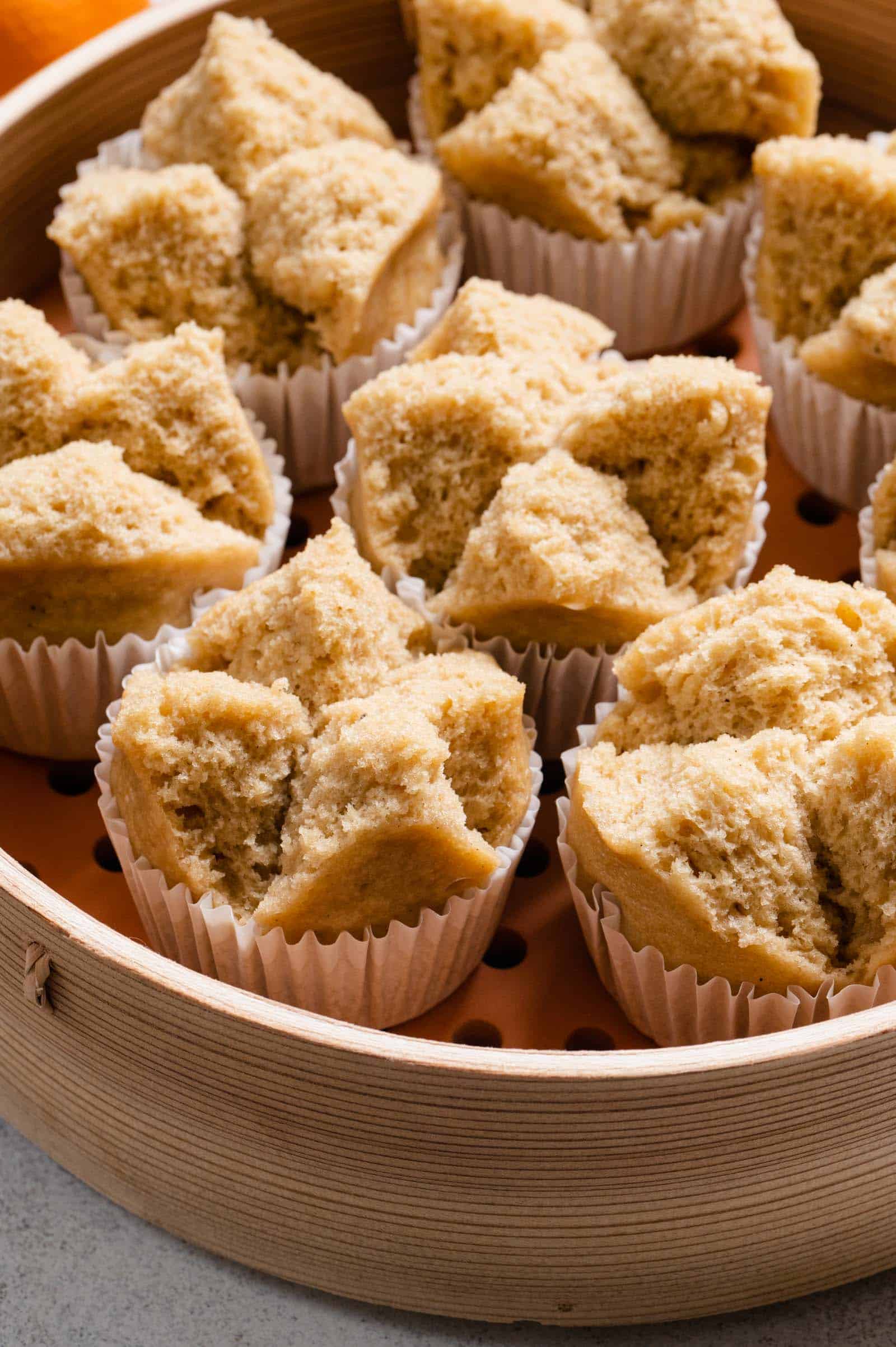
Everyone wants their cakes to blossom into a pretty 3-petaled or 4-petaled cake. To encourage the cake to crack open in this manner, you need to draw a large plus sign or a cross over the batter before steaming the cakes (see photo below).

The batter needs to be thick enough so that once you draw the plus sign on the cake, those lines don’t flood over immediately. The photo below shows what the plus signs will look like if the batter isn’t thick enough. Notice how the lines are less defined in this second batch.

The question then becomes, how do you test the thickness of the batter before it’s too late? Right after you mix the batter, use a toothpick or skewer to draw a line into the batter. If the line floods over very quickly, it means your batter isn’t thick enough, and you should add 2 tablespoons of flour (the boxed cake mix or all-purpose flour) into the batter. If the line remains well defined after 15 seconds (like you see in the photo below), the batter is thick enough.
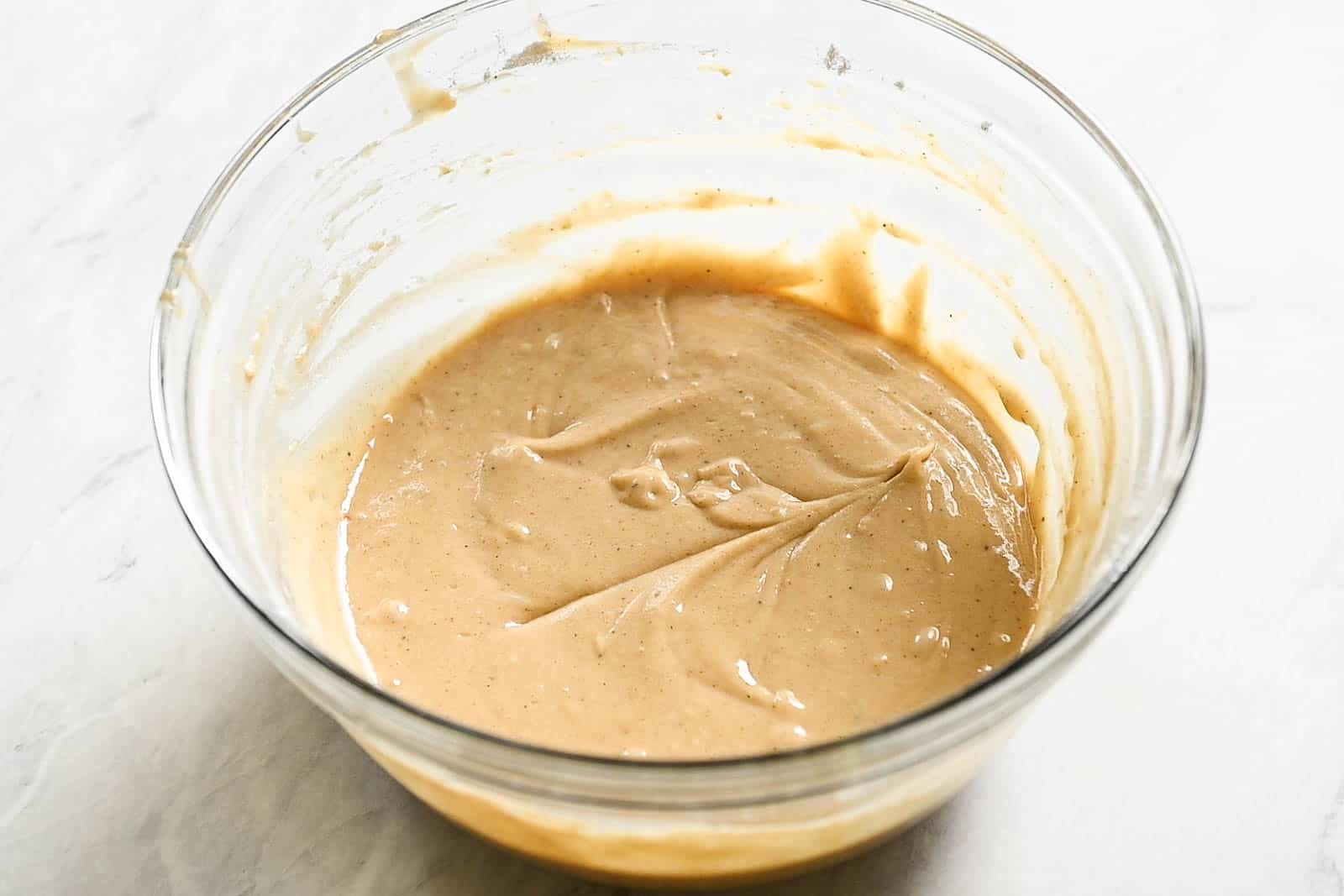
I typically steam the fat goh in a 6-muffin pan lined with paper liners. I find the texture of the cake comes out the best when it’s steamed this way. The downside to this steaming method is that you can only steam 6 cakes at once.
![]()
Alternatively, you can steam the cake in silicone muffin cups. Simply line silicone cups over a large plate or pan, pour batter into the silicone cups, draw the plus signs, and steam. This method allows you to steam more cakes at a time, and the fat goh releases from the silicone cups very easily. Moreover, these cups are reusable, so you won’t generate as much waste as you would with paper liners.
The downside of using silicone muffin cups is the texture of the fat goh. I found that the cakes have a slightly chewier quality when I steam them in the silicone cups, which I don’t like. I could just be overly picky, as my husband doesn’t seem to notice or mind the difference.
Finally, you can probably steam these cakes in lightly greased ceramic ramekins, but I have not tested this method yet.
When I first tested the fat goh, I placed paper liners on a plate and poured the batter into them before steaming. Because there was no pan to hold up the structure of the paper liners, the batter simply spilled out, and I was left with flat cakes.
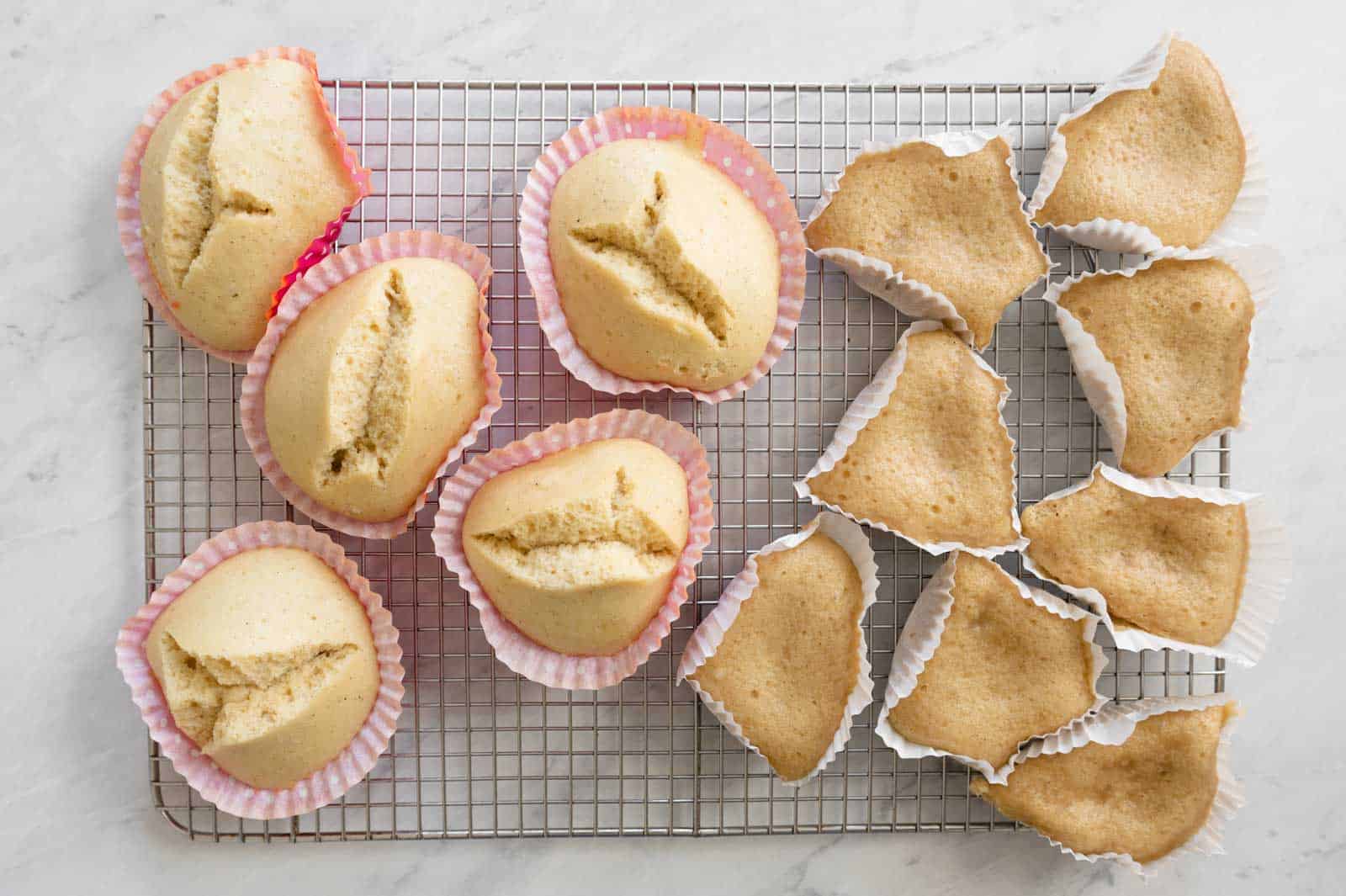
Of course, after the blundered first batch, I blamed the paper liners I used and not my flawed logic. So I decided to test the recipe again with thicker paper liners this time (the batch you see on the left). Unfortunately, the results were the same, so I decided to dig up old photos I took of my mom making fat goh.

When I found this photo of the muffin liners and batter in the muffin pan, I started laughing. I didn’t think that my mom owned a 6-muffin pan, so I didn’t bother using one the first 2 times I tried the recipe. I showed a photo of my mistake to my mother and she laughed and said, “of course that wouldn’t work!” Lesson learned.

By the way, I discovered during my blundered first attempts that you shouldn’t use colorful paper liners for this recipe. The color of the paper cups will transfer to the cake.
You can store the fat goh in a tight container at room temperature for 1 to 2 days. If you live in a humid climate, you should probably refrigerate the fat goh after a day. The cakes will keep in a container in the refrigerator for about 4 to 5 days. You can heat up the cakes in the microwave for 15 to 30 seconds.
The cakes also freeze well. To reheat frozen fat goh, steam the cakes at medium-high heat for 9 to 10 minutes.

LANGUAGE NOTES FOR FAT GOH & FA GAO
Fat goh (發糕) comes from the Cantonese pronunciation. I typically transliterate 糕 (which means cake) as “go” in English. However, the words “fat go” look a little odd together in English. A quick Google search of “fat go” led to many results related to weight loss, which is not what this recipe is about at all. Therefore, I opted to use “goh” for the English spelling of 糕 in this recipe.
This cake is also known as fa gao, which comes from the Mandarin pronunciation. If you do a search online, you’ll probably see this cake more commonly referred to as fa gao.
Fa Gao 發粿 – Chinese Prosperity Cakes
FAQ
What is the meaning of FA Gao?
Why is Fa Gao lucky?
What are sticky rice cakes made of?
What is FA Huat in Chinese?
What does fa gao mean in Chinese?
SAVE THIS! What is fa gao? Fa gao 發糕 ( fat goh in Cantonese) is Chinese prosperity cake. It is a small, steamed, sweet cake often colored red and served at Chinese New Year. The name of the cake means to “grow higher,” with hopes that this new year will be better than the last year.
How to make Chinese fa gao?
Chinese Fa Gao (fāgāo – 发糕), also known as prosperity cake or fortune cake, is a common sight around Chinese New Year. It’s also served at other holidays, ceremonial events, and weddings. This fa gao recipe will walk you through how to make it. Add the rice to a medium bowl, and cover it with 2 inches/5cm of water.
What is a fa gao cake?
Fa Gao, or Chinese prosperity cake, is a light and fluffy steamed sweet cake topped with jujubes. Make this celebratory cake for Chinese New Year to bring in good fortune! {Vegetarian} Fa Gao (发糕), or Fat Goh in Cantonese, symbolizes prosperity. The character 发 (Fa) is the same one in the phrase 发财, which means “bringing in good fortune”.
What is Cantonese fa gao?
Cantonese fa gao is made with flour and yeast, and it’s similar to Ma Lai Go. After much debating with myself, I decided to make a type of fa gao that’s made with rice (short grain white rice, in this case). This recipe yielded a very nice chew, with a sweet rice wine aroma that you don’t get from flour. I think that rice wine flavor is essential!
